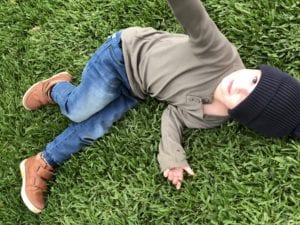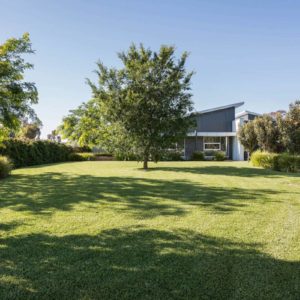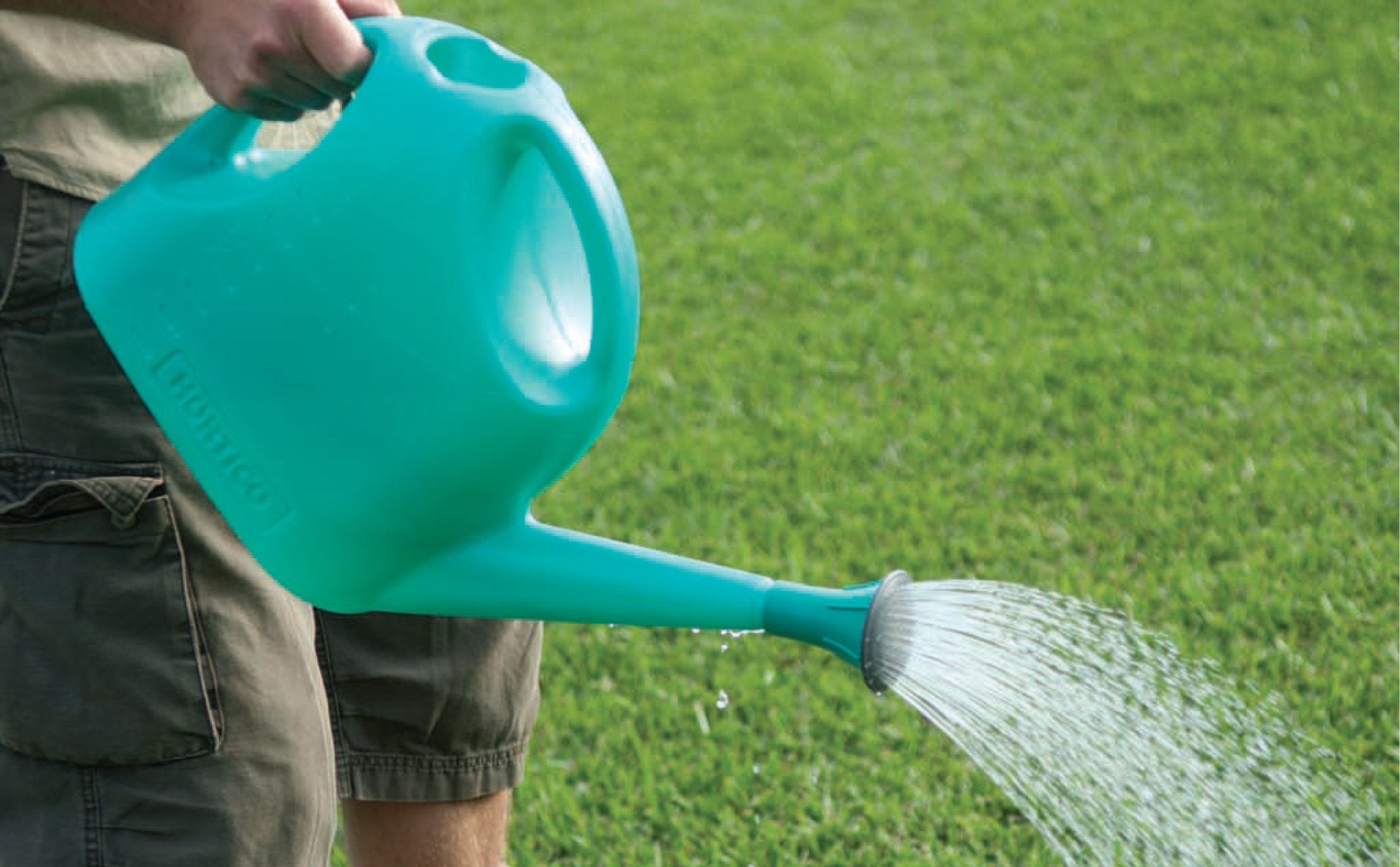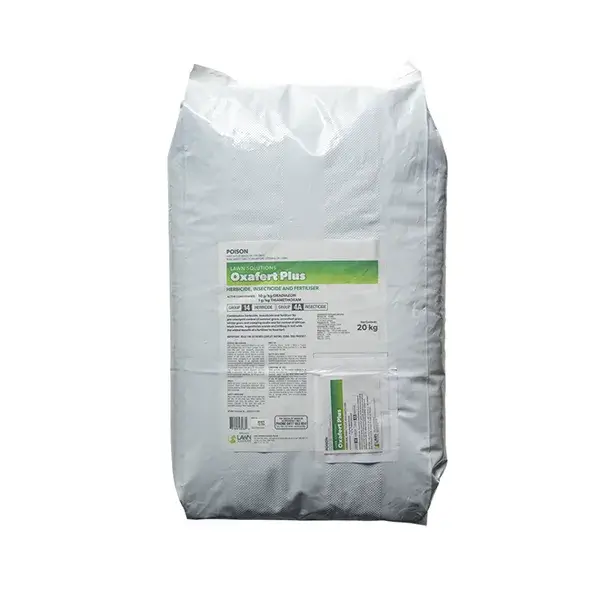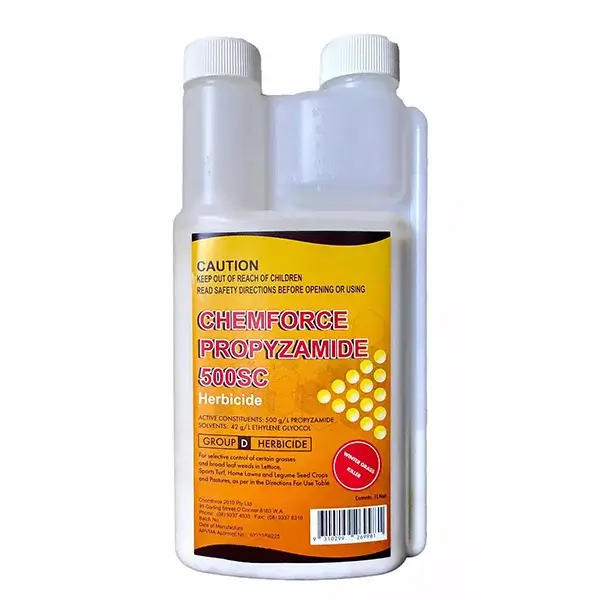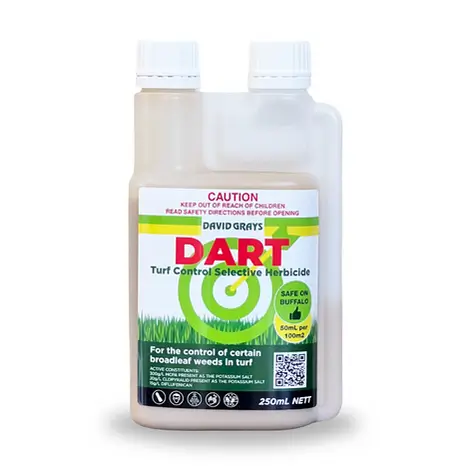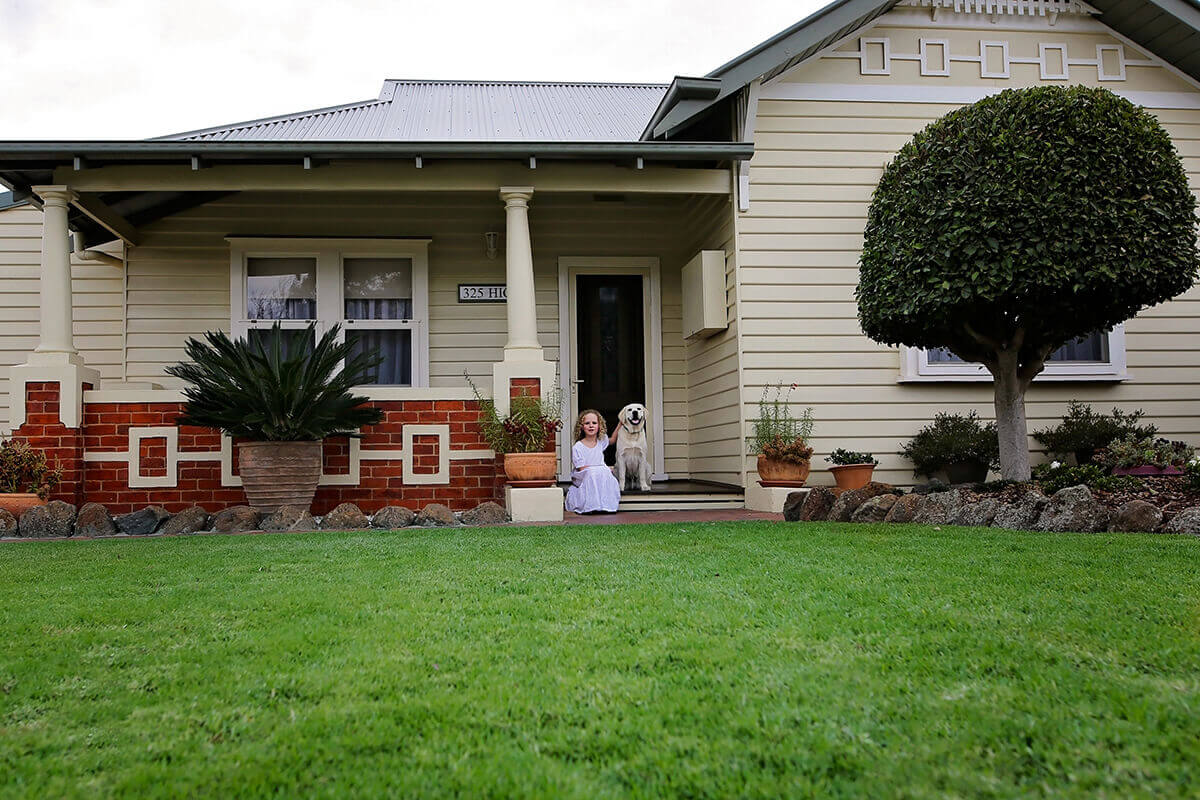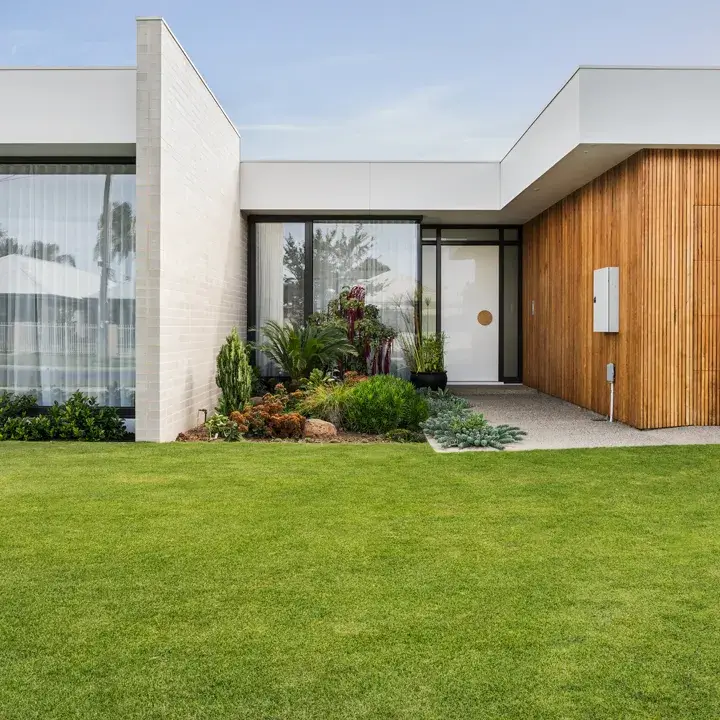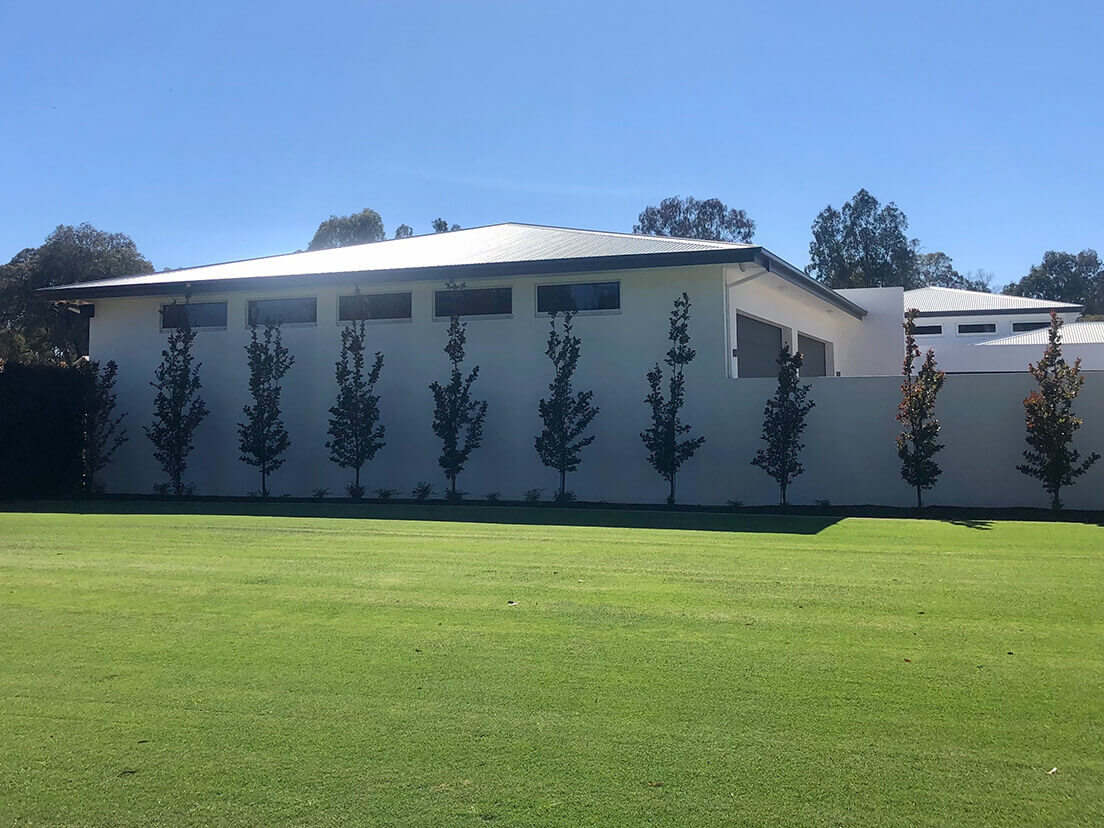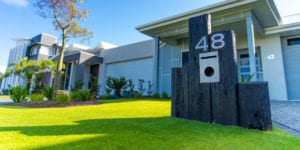There is no denying how good a natural green lawn looks and feels. However, in today’s fast-paced society, synthetic turf can be considered the easy, low maintenance alternative, ultimately saving water, time and money.
With advances in technology and improved materials, synthetic turf might look like an attractive option but you might be surprised to learn that it is actually more expensive to our environment, your health, your hip pocket and your property value than you might think.
So let’s take a look at the facts and debunk some of those myths.
Why is real grass better than fake grass?
1. Safer playing spaces
Open and natural green spaces promote physical activity and are the perfect surface for kids to run around on. Whether it is for leisure and recreational activities or participating in professional sport, nothing says ‘play’ more than a lush green lawn.
Unlike synthetic turf which is hard, unforgiving and can cause ‘turf’ burn, natural grasses offer softer, more cushioned and cooler playing surfaces that cause fewer abrasions, injuries and infections and allow for surer footing than synthetic alternatives.
Synthetic grass is not only made from plastics but in an attempt to provide shock absorbency, it is usually installed with a layer of vulcanised rubber and sand granules (made from recycled car tyres and a cocktail of other chemicals) as filler. Yuk! These chemicals are dangerous to inhale and can cause potential toxic danger from long-term exposure. Not really something you want your kids or animals playing around on, right?
2. Better for the environment
Natural turf improves water quality by slowing down run-off and trapping pollutants and sediment. Pollutants in the atmosphere can make rainfall so acidic it damages the environment. However, rainwater filtered through a healthy lawn is 10 times less acidic than run off from a hard surface. This improves the quality of groundwater and reduces contamination of bodies of water, such as rivers and lakes.
Meanwhile, synthetic grass does not stop pollutants and instead has the potential to leach heavy metals and other toxic residues from the materials it is made from into the ground.
3. Reduces erosion
Natural turf is a cheap, effective and durable form of soil erosion control. Extensive root systems on turf grasses lock soil in place and protect it from loss from wind and water.
4. Reduces noise and glare
Do you live by a busy road? Research shows that a grass area of only 6m2 near a roadside can reduce noise by up to 40%.
Highly reflective surfaces, such as walls, concrete, pavers and other unnatural landscape materials such as synthetic turf, cause glare on sunny days. Soft, variable shapes of grass blades deflect light and reduce glare, making outdoor spaces more comfortable and enjoyable.
5. Reduces the risk of fire
Synthetic grass is flammable while natural turf acts as a fire retardant. Mown lawn or grazed green grass is recommended for surrounding buildings to help provide a natural barrier from wildfires.
6. Increases oxygen
Did you know that a 232m2 area of grass absorbs enough CO2 and releases enough oxygen for a family of four to breath for an entire year? Wow!
When we think of oxygen producing plants we usually think of trees but like all plants, healthy grass is extremely efficient at absorbing carbon dioxide and other pollutants from the air. As part of the process, natural grass helps to produce the oxygen you breath and reduce the potential for global warming.
In comparison, synthetic turf does not have the ability to remove carbon dioxide from the atmosphere and significant carbon emissions are produced from the production and eventual disposal of synthetic turf.
7. Increased health benefits
Ever noticed your mood instantly improves the minute you step outside or take a walk through a park or garden?
It’s a well-known fact that green spaces, using natural turf, can significantly improve our mood and mental health by providing a cool, calm and relaxing environment.
Lawns and exposure to natural outdoor greenery can reduce stress, lower blood pressure, reduce muscle tension, improve attention and increase feelings of happiness and serenity.
Open grassy spaces can also instil feelings of safety and have even been linked to less outdoor graffiti, vandalism and littering.
Grass also traps around 12 million tonnes of dust and smoke particles from the atmosphere each year which helps keep the air we breathe cleaner.
8. It’s simply cooler
Is there anything better than the feeling of soft, cool grass between your toes? As a living organism that transpires heat, even on a hot day natural turf can have a beneficial cooling.
This cooling benefit also extends to your home, where the average front lawn can have a cooling effect equal to two air conditioners.
Synthetic turf on the other hand, absorbs heat and can be up to three times hotter than natural grass, making it unable to play or even walk on.
9. It is cheaper and requires less maintenance
Synthetic grass can cost up to 6 times the price of natural grass to purchase and install.
As natural turf needs to be watered, fertilised and mowed regularly to survive you’d be forgiven for thinking these costs would even out over time, but a recent study of playing fields in the US over a 25 - 50 year lifespan indicated natural surfaces in all cases, except tennis, were actually less expensive to maintain.
And while you might also think once your synthetic turf is installed you can just forget about it, there are still several procedures you need to do to keep it looking good, such as:
- Disinfecting, cleaning and sweeping of leaves, debris and other unwanted substances.
- Checking and topping-up of infill levels.
- Grooming to maintain texture and uniformity.
- Damage repair and replacement, including joint and seam maintenance.
- Weed removal.
- Moss and algae prevention.
10. Increases property value
Not only can natural turf save you money in the long run but it could also add value to your property.
A national survey involving 114 Australian real estate agents in 2012 revealed a natural lawn can add 18 per cent (or up to $75,000) to the selling price of homes across the country.
In other research 9/10 homebuyers also prefer natural grass so if you are looking to sell your house, ensuring you have areas of natural turf is a must!
Still not convinced, consider the following facts:
- Some synthetic grass manufacturers recommend regularly applying water to counteract the high temperatures reached on hot days by synthetic turf surfaces.
- Synthetic turf will not last forever, so even if you do take care of it, eventually it will still show signs of wear and tear and will need to be replaced.
- Natural turf is a living organism, once it is installed if you continue to give it a little love, will last a lifetime.
- Synthetic turf can't be reused or recycled and will therefore end up in landfill, which is bad news for our environment.
Here at Coolabah Turf our motto is simple - where you can have natural turf you should!
Natural turf is part of a balanced environment and greatly benefits your community and your family’s quality of life in ways that synthetic lawns simply can’t.
We specialise in finding and breeding low maintenance lawns and are committed to helping you grow a lush, healthy and sustainable lawn that will make the world a better place for everyone.
For more information about the benefits of natural instant turf vs synthetic turf please call us on 1800 055 515.

